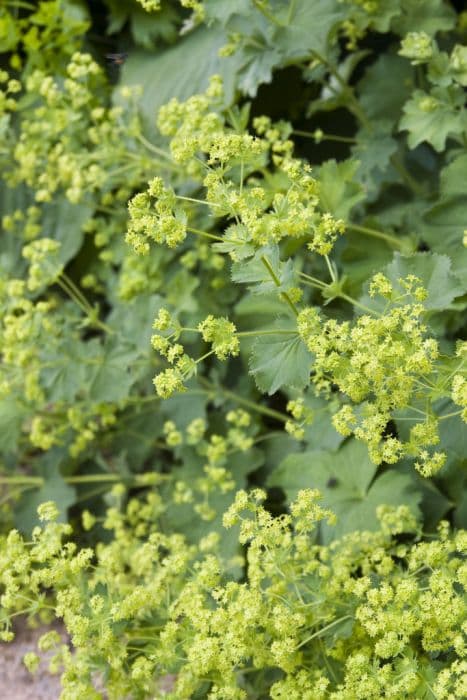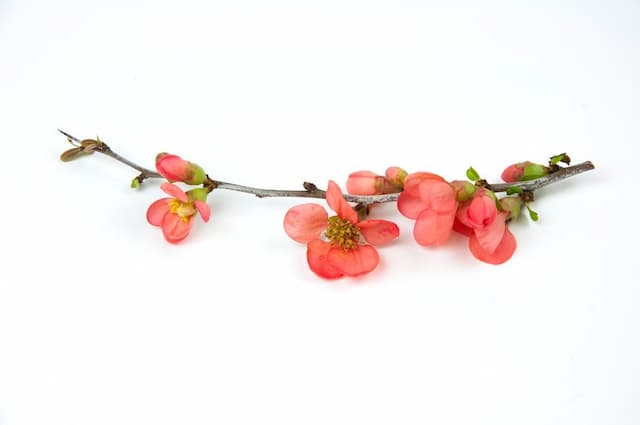English Rose Rosa Vanessa Bell = 'Auseasel' (PBR) (S)
![rose [Vanessa Bell]](/_next/image?url=https%3A%2F%2Fplants-admin.emdemapps.com%2Fimages%2Fplants%2F%2Fimages%2F604b6309362e4.png&w=3840&q=75)
ABOUT
Rosa Vanessa Bell, commonly known as a rose, presents a charming display of beauty in any garden with its elegant flowers. The plant bears a vibrant bounty of blooms, showcasing a pastel palette that often features shades of soft yellow to cream. The blooms are typically full and rounded, with numerous delicate petals overlapping in a classic rosette form—a signature look of many roses. The petals exhibit a smooth and sometimes slightly ruffled edge, contributing to the flower's overall textural appeal. As the plant flourishes through its blooming season, the flowers exude a delightful fragrance, adding a sensory layer to their visual allure. The foliage of the Rosa Vanessa Bell is lush and abundant, with leaves that are typically a deep, glossy green, providing a rich backdrop that further accentuates the beauty of the flowers. While the plant's appearance can vary based on care and environment, its flowers consistently deliver an air of romantic elegance that is the hallmark of the rose family.
About this plant
 Names
NamesFamily
Rosaceae
Synonyms
English Rose, Austin Rose, Vanessa Bell Rose
Common names
Rosa 'Auseasel'
 Toxicity
ToxicityTo humans
The Rosa Vanessa Bell, commonly known as the English Rose, is not considered toxic to humans. These plants do not contain compounds that are known to be poisonous if ingested. However, it's important to note that eating any plant material may cause discomfort or an adverse reaction in some individuals with sensitivities or allergies. It is generally advised to avoid ingesting parts of ornamental plants.
To pets
The English Rose, commonly referred to by its botanical synonyms for the variety 'Auseasel', is not known to be toxic to pets. Roses do not contain substances that are poisonous to animals, but it is still not recommended for pets to consume plant material. Ingesting the leaves or stems can cause mild gastrointestinal upset due to the physical irritation of the plant material, rather than chemical toxicity.
 Characteristics
CharacteristicsLife cycle
Perennials
Foliage type
Deciduous
Color of leaves
Green
Flower color
Yellow
Height
4 feet (1.22 meters)
Spread
4 feet (1.22 meters)
Plant type
Shrub
Hardiness zones
5
Native area
Cultivar
Benefits
 General Benefits
General Benefits- Aesthetic Appeal: The 'Auseasel' rose, also known as Rosa Vanessa Bell, has a distinctive and beautiful bloom that enhances gardens and landscapes with its vibrant color and classic rose shape.
- Fragrance: This variety of rose emanates a pleasant scent that can create a fragrant garden environment and elevate the sensory experience of an outdoor space.
- Attracts Pollinators: The 'Auseasel' rose, with its open flowers, attracts bees and other pollinators, supporting local ecosystems and promoting biodiversity.
- Versatility in Landscaping: This rose can be used in various landscaping designs, from rose beds and borders to cottage gardens and cut flower gardens.
- Long Blooming Period: The 'Auseasel' rose typically has a long blooming season, providing a lasting display of flowers and extending the aesthetic appeal over several months.
- Improved Disease Resistance: Cultivated rose varieties like Rosa Vanessa Bell often offer improved resistance to common rose diseases, reducing the need for chemical treatments and simplifying garden maintenance.
- Hardiness: This rose is bred for hardiness, enabling it to withstand a variety of climatic conditions and increasing its adaptability to different garden environments.
- Cut Flower Usage: The blooms of the 'Auseasel' rose are suitable for cutting and use in floral arrangements, bringing beauty and natural elegance indoors.
 Medical Properties
Medical PropertiesThis plant is not used for medical purposes.
 Air-purifying Qualities
Air-purifying QualitiesThis plant is not specifically known for air purifying qualities.
 Other Uses
Other Uses- Dye Production: The petals of the rose can be used to create natural dyes for fabrics, yielding shades of pink to light red.
- Floral Water: Distilling rose petals can produce rose water, which is used in cooking, particularly in Middle Eastern cuisines, and in cosmetic formulations.
- Landscape Design: Roses are often used in permaculture and other sustainable landscape designs to provide aesthetic value and attract beneficial insects.
- Art Supplies: Rose petals can be used to make eco-friendly paper or incorporated into paper-making for decorative effects.
- Culinary Garnish: Edible rose petals can be used as an elegant garnish for desserts and some savory dishes.
- Crafting Potpourri: Dried rose petals are a common ingredient in potpourri mixtures, offering a pleasant fragrance to rooms.
- Floral Arrangements: Roses are a traditional choice for bridal bouquets and table arrangements due to their beauty and variety of colors.
- Aromatherapy: The scent of roses is used in aromatherapy to help reduce stress and promote relaxation.
- Natural Confetti: Dried rose petals can serve as a biodegradable alternative to traditional confetti at weddings or celebrations.
- Flavoring Agent: Rose petals can be infused into syrups, jams, or honey, adding a subtle floral flavor to various culinary creations.
Interesting Facts
 Feng Shui
Feng ShuiThe rose is not used in Feng Shui practice.
 Zodiac Sign Compitability
Zodiac Sign CompitabilityThe rose is not used in astrology practice.
 Plant Symbolism
Plant Symbolism- Love: As a variety of rose, the 'Rosa Vanessa Bell' traditionally symbolizes love and affection, reflecting the beauty and depth of this emotion.
- Beauty: Roses are often associated with beauty due to their elegant form and stunning blooms, suggesting appreciation for physical and inner beauty.
- Friendship: Some rose hues, particularly lighter shades like those of the 'Rosa Vanessa Bell', can represent friendship and joy shared between people.
- Honor: Presenting a rose can be a sign of respect and admiration, symbolizing honor towards someone's achievements or character.
- Devotion: The longevity of roses as a revered flower over centuries signifies deep devotion and unwavering commitment.
- Secrecy: Historically, roses were emblematic of secrecy, with the phrase sub rosa (under the rose) indicating a confidential matter.
 Water
WaterThe English Rose 'Vanessa Bell' should be watered deeply once a week, providing about 1 to 1.5 gallons of water for each plant during the growing season. In hot and dry conditions, water twice per week, ensuring the water penetrates to the root zone without causing standing water around the plant. During the winter months, water only if there are signs of drought, as English Roses require less water when dormant. Always avoid watering the foliage directly to reduce the risk of fungal diseases, aiming the water at the base of the plant instead.
 Light
LightThe English Rose 'Vanessa Bell' thrives in full sunlight with at least six to eight hours of direct light daily. A spot that provides morning sun is ideal as it helps to dry dew from the leaves, reducing the likelihood of fungal diseases. Avoid locations where the plant will be in the shade for most of the day, as insufficient light can lead to poor blooming and weaker growth.
 Temperature
TemperatureEnglish Roses like 'Vanessa Bell' prefer a temperature range between 65 to 75 degrees Fahrenheit during the day and slightly cooler at night. They are hardy plants that can endure temperatures as low as 0 degrees and as high as 90 degrees Fahrenheit; however, prolonged exposure to extremes can be detrimental. The ideal climate should have a good balance of warm days and cool nights, which promotes healthy growth and bloom production.
 Pruning
PruningPruning the English Rose 'Vanessa Bell' is essential to maintain a strong, healthy plant and encourage prolific blooming. Prune in late winter or early spring, removing dead or diseased wood and thinning out crowded areas to improve air circulation. Deadhead spent flowers throughout the blooming season to promote continuous blooming. The best time for major pruning is when the plant is dormant and after the last frost to minimize the risk of frost damage to new growth.
 Cleaning
CleaningAs needed
 Soil
SoilThe ideal soil mix for an English Rose, commonly known as Rosa 'Vanessa Bell', should be well-draining, rich in organic matter, and slightly acidic to neutral, with a pH ranging from 6.0 to 7.0. A blend of one-third compost, one-third garden soil, and one-third grit or perlite is recommended for optimal growth.
 Repotting
RepottingRoses, including the Rosa 'Vanessa Bell', do not typically require frequent repotting and are often planted directly into the garden. If grown in a container, repot every 2 to 3 years or when the plant becomes root-bound.
 Humidity & Misting
Humidity & MistingRosa 'Vanessa Bell', like most roses, prefers moderate humidity levels. Optimal outdoor conditions are sufficient for this variety, and there is no need for specific humidity control when grown in a garden setting.
 Suitable locations
Suitable locationsIndoor
Place near a sunny window, water well, and ensure good air circulation.
Outdoor
Plant in full sun, enrich soil with compost, and provide consistent moisture.
Hardiness zone
5-9 USDA.
 Life cycle
Life cycleRosa Vanessa Bell = 'Auseasel' (PBR) (S), commonly known as an English Rose, begins its life cycle as a dormant bare-root plant or potted young rose in early spring. After planting, the rose starts its vegetative growth stage, developing a robust root system and leafy shoots. The next phase is the flowering stage where the plant produces fragrant blooms, which typically occurs from late spring to fall in cycles. Following pollination, the plant may produce rose hips (fruit), containing seeds for reproduction; however, as a cultivated variety, it is often propagated via cuttings or grafting. As temperatures drop in autumn, the rose enters a period of dormancy, conserving energy and resources. With the return of warmer spring weather, the cycle restarts with resumed growth and flowering.
 Propogation
PropogationPropogation time
Early spring
The Rosa Vanessa Bell, often known simply as 'Vanessa Bell' rose, is typically propagated by cuttings, a method favored for maintaining the purity of this particular cultivar's characteristics. The best time to take cuttings is in late winter or early spring, just before the new growth begins. Semi-hardwood cuttings of about 6 to 8 inches long are taken from a healthy, disease-free mother plant. The lower leaves of the cutting are removed, and the cut end is dipped in rooting hormone to stimulate root development. Then, the cutting is placed in a well-draining potting mix, ensuring at least two or three nodes are buried in the soil to maximize potential root growth. The pot is then placed in a warm, bright location but out of direct sunlight to avoid drying out, and kept consistently moist until roots develop, which typically takes a few weeks. This method is highly effective for roses and allows gardeners to replicate the desired qualities of the 'Vanessa Bell' rose in new plants.









